You don’t need a lot of expensive gear to go snorkelling, but with the right gear you will have a safer and more enjoyable experience.
In this guide, we’ll break down the essential items you need like masks, fins and a snorkel and mention a few extras that will make your snorkel more fun or comfortable like a wetsuit and anti-fog solution.
For beginners, you can get into snorkelling relatively inexpensively, but like all hobbies, the sort of gear you have can grow as your passion for it grows. Let’s jump right in and see where to get started!
Disclosure: Please Note That Some Links In This Post May Be Affiliate Links, And At No Additional Cost To You, We Earn A Small Commission If You Make A Purchase. Commissions Go Toward Maintaining The Snorkel Spots Website.
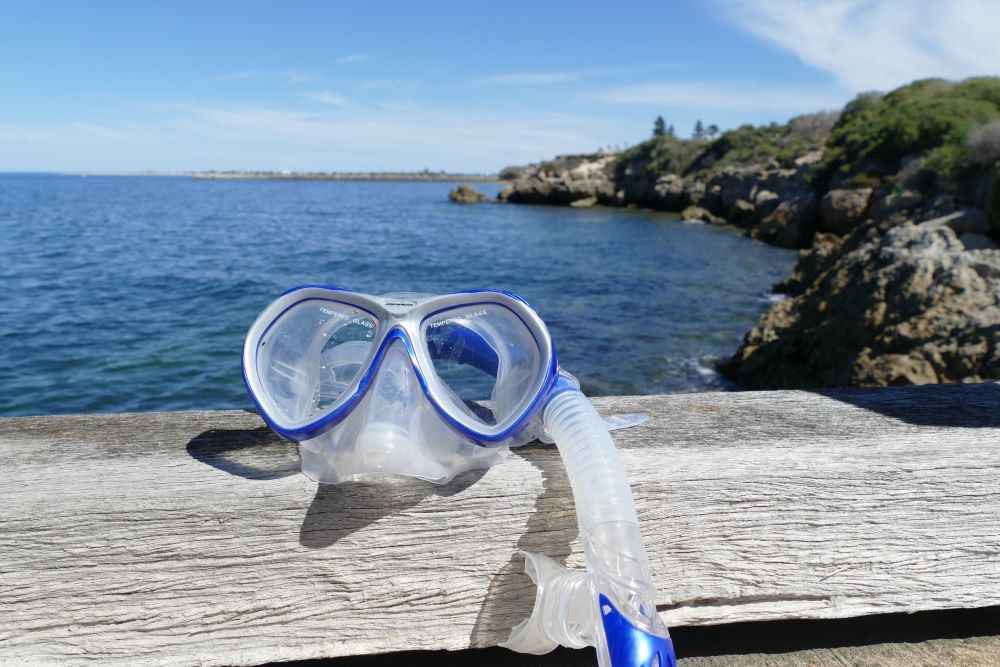
Mask
A well-fitting mask is one of the most important pieces of snorkelling equipment. If you want to see what’s living in the water, you must have a mask. It allows you to see clearly underwater by creating an airtight seal around your eyes and nose.
Here are a few quick tips for choosing a mask:
- Choose a mask made with tempered glass. This prevents your mask from shattering. Don’t be alarmed by the idea of your facemask glass breaking. In over 40 years of snorkelling, I have never heard of or seen anyone crack the glass on their facemask.
- Choose a mask that covers your nose for a more comprehensive field of vision.
- Use a de-fogging spray so you get a clear view from your mask
- Choose a mask with a seal made of 100% silicone for comfort and a good seal
- Try on different masks – no two faces are the same so it is worth trying on a few masks to find one that fits your face. If you are snorkelling with kids, choose a smaller mask for them.
- Glasses or contact users may consider opting for a prescription mask.
- Keep sunscreen off your mask or it will fog up and it might sting your eyes
Snorkel
A snorkel is the other essential piece of snorkelling equipment. It is the tube that allows you to breathe while keeping your face submerged in the water.
Look for a snorkel with a soft mouthpiece and a purge valve, which makes it easier to clear water from the tube. Some snorkels also come with a splash guard on the top to prevent water from entering. Additionally, a dry snorkel is designed to close off the top when submerged, reducing the chances of water entering the tube.
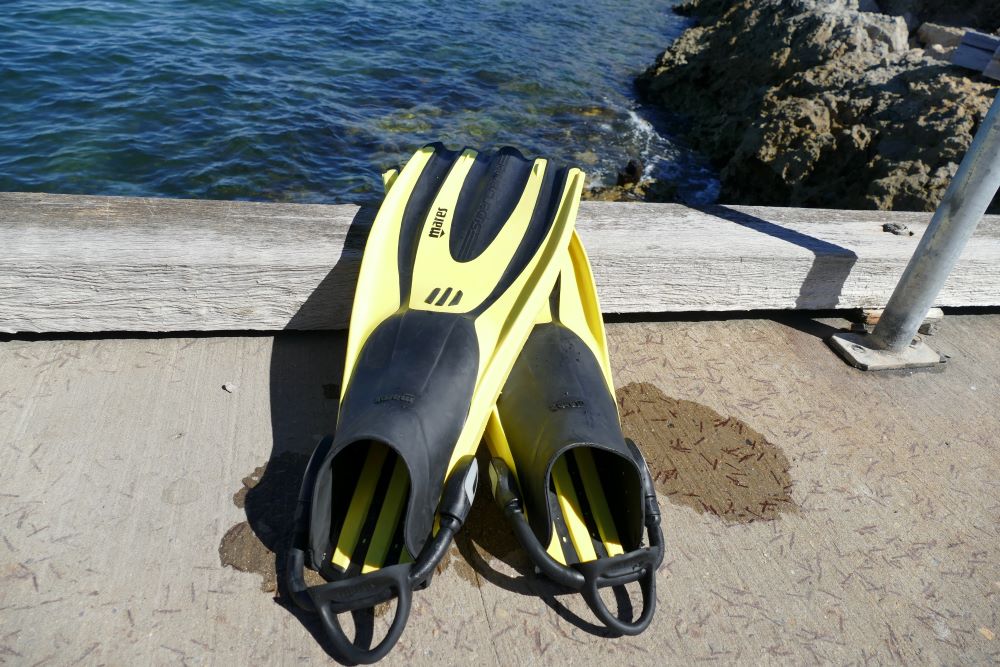
Fins
In most situations you will need fins (or flippers) to help move you through the water. They let you move with less effort and reduce fatigue if you need to deal with currents or swim a long way.
Choose fins that fit snugly but not too tight, ensuring they are comfortable for extended use. Full-foot fins are ideal for warm water, while open-heel fins with adjustable straps are suitable for colder conditions or when wearing booties.
Just like choosing shoes, it is a good idea to try fins on before you buy them. If they feel uncomfortable on land, they won’t magically get better in the water!
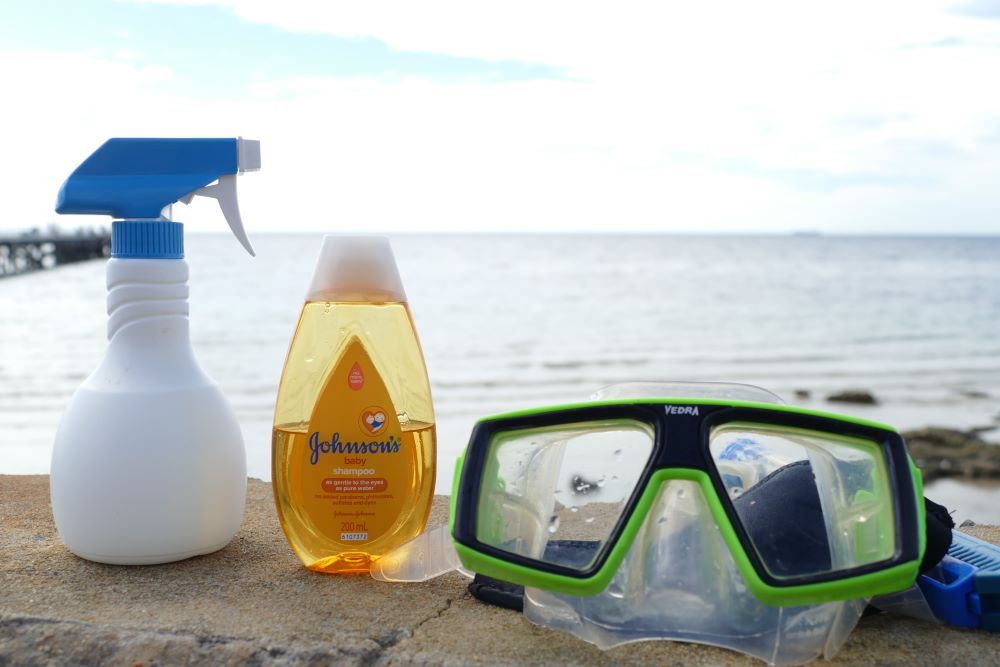
Defogger Solution
We never snorkel anywhere without our anti fog solution for our mask. Keep it with your snorkelling gear and use it before getting in the water. There is nothing more frustrating on a snorkel than having to constantly clear your facemask!
Read more about staying fog free.
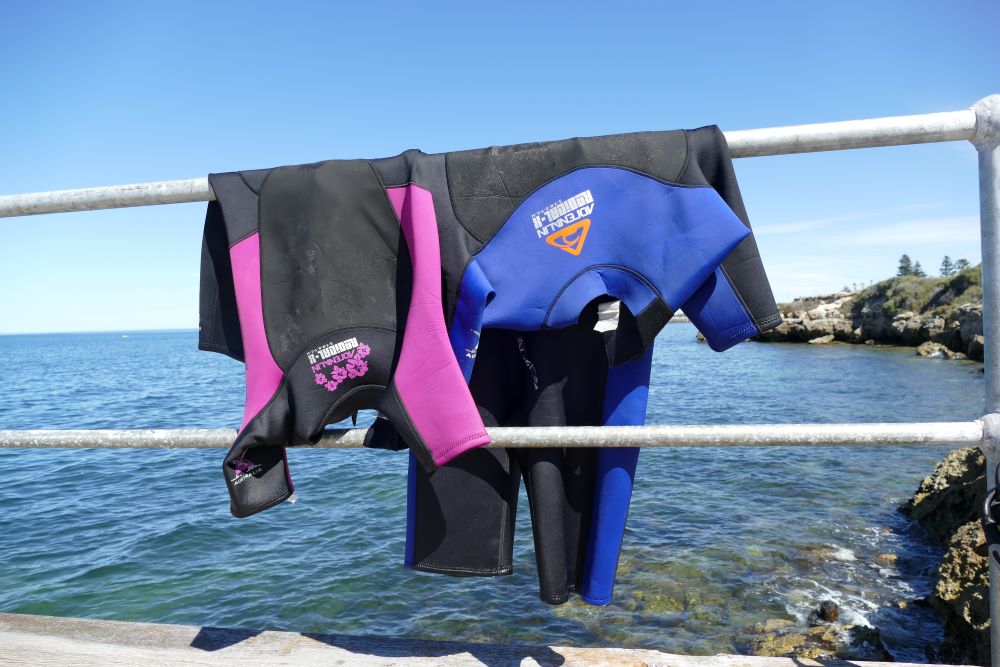
Wetsuit or Rash Top or Stingersuit
If you are doing an amazing snorkel, the last thing you want to do is get out too soon because of the sun or cold water.
To stay comfortable and safe, depending on the conditions, you should have a wetsuit or sunsuit or maybe a stingersuit. Our most used bit of a gear is a full length 3/2mm wetsuit which provides protection from both cool water and the sun.
In tropical warmth water (greater than 24 degrees), you could get away with a shortie wetsuit or rash top. Keep in mind, wetsuits have the advantage of providing extra buoyancy which is great for kids and less able swimmers.
In northern Australia from November to the end of May you will need to wear a full length stingersuit to stay safe from stinging jellyfish.
Optional Snorkelling Gear
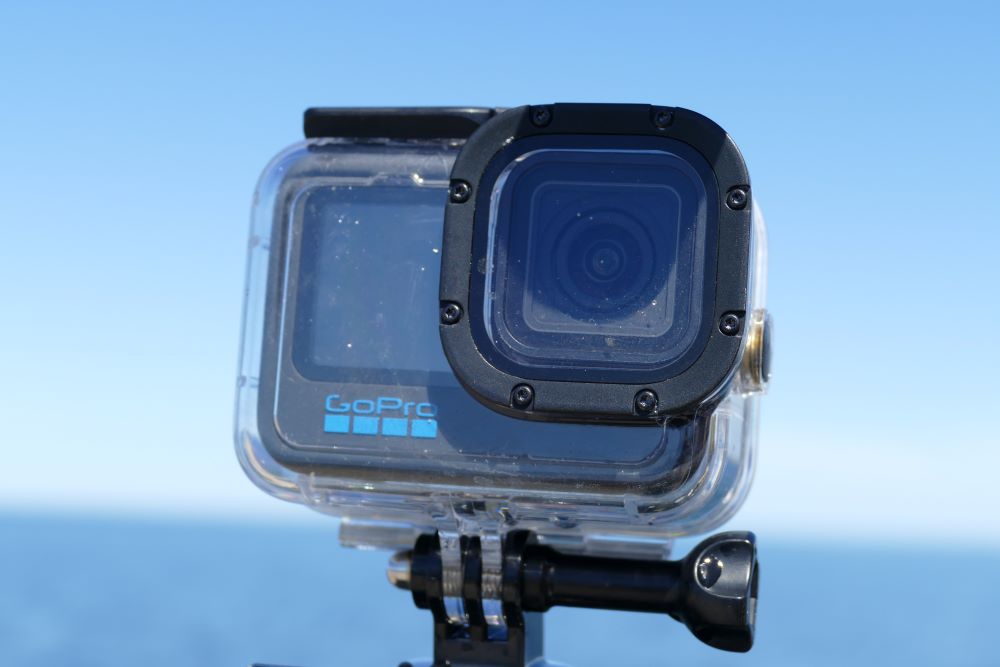
Underwater Camera
The only thing better than seeing the underwater world with your own eyes is capturing a lifelong memory with an underwater camera.
There are several options that range from disposable waterproof cameras to advanced underwater photography gear. Make sure the camera is rated for the depth you plan to snorkel and test it before your trip to familiarize yourself with its functions.
We have used a GoPro and compact underwater cameras from Nikon and Olympus. We also have a daughter who is a professional underwater photographer on the Great Barrier Reef and Ningaloo Reef.
If you want to try underwater photography read our guide for underwater camera options

Reef Shoes
We have open heel fins so we can use reef shoes. We often need to walk over rocks, gravel or exposed reef to get to a snorkel. You don’t want to do that in bare feet and walking in your fins is a bad idea.
Reef shoes with a hard sole are excellent for getting to the water. Then we just slip them straight into our fins and off we go. They also provide a bit of warmth in cool water.
Mesh Bag
A mesh bag is useful for carrying and storing your snorkelling gear. It allows the equipment to dry and helps prevent mould. It is also easier to carry one thing with all your gear in it than juggling lots of bits and pieces.
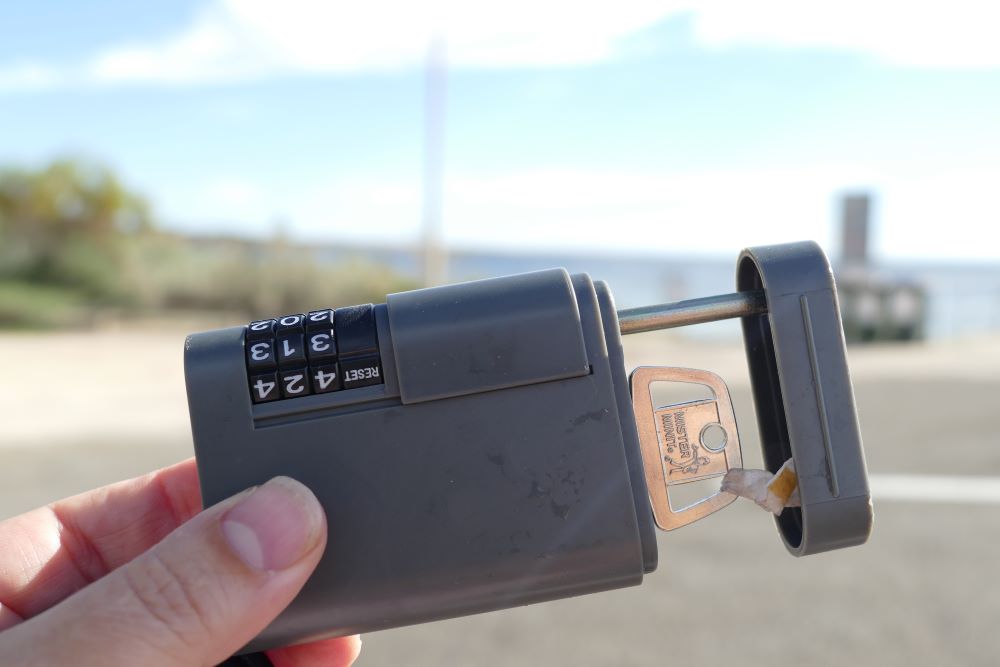
Somewhere to put your Car Key
If you are not on a tour or don’t have anyone waiting for you back on land, what do you do with your car kay? There are a variety of car key lock boxes and bags.
Some are little containers that you can attach to yourself and take with you in the water. There are also boxes with a combination lock that you can discretely secure to your car with a magnet.
Dive Watch or Waterproof Watch
A waterproof watch is important if you need to swim in tidal areas or keep track of how long you are in the water. For instance, at Ewens and Piccaninnie Ponds in South Australia, your snorkelling permit is good for 60 minutes, so you need to know when to get out.
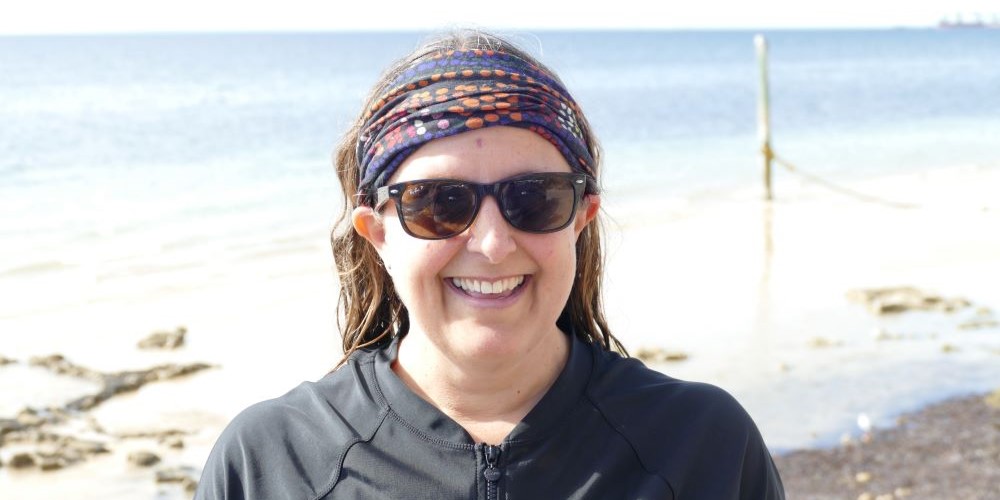
Head Wear
Whether you want to stop long hair getting tangled around your facemask and snorkel, or you have a ‘high forehead’ that needs protection from the sun, a bandana is a good way to go.
For me, who has a lot of exposed skin between the top of my facemask and my hair line, my snorkelling buff is much easier than putting on sunblock!
Safety Equipment/ Considerations
Depending on your location, the conditions and your experience you might want safety equipment such as a signalling device (like a whistle) or a flotation aid like noodle or buoyancy vest.
If you are worried about staying safe when you snorkel, check out our safe snorkelling guide.
- What Snorkelling Equipment do I Need? - February 15, 2024
- How to choose a Good Snorkelling Location for Beginners - February 15, 2024
- Do I need a Wetsuit or Stinger Suit for Snorkelling? - February 15, 2024

